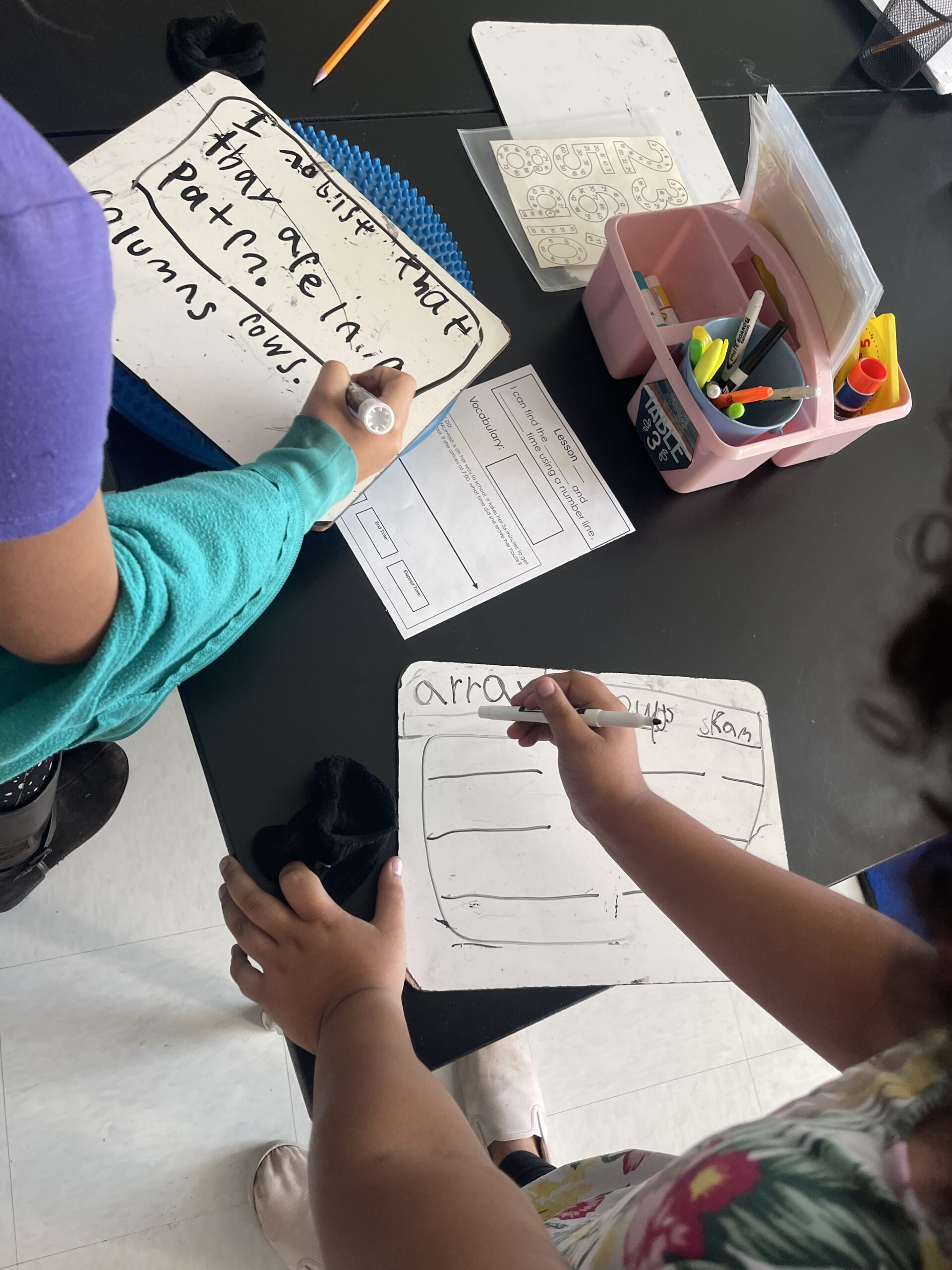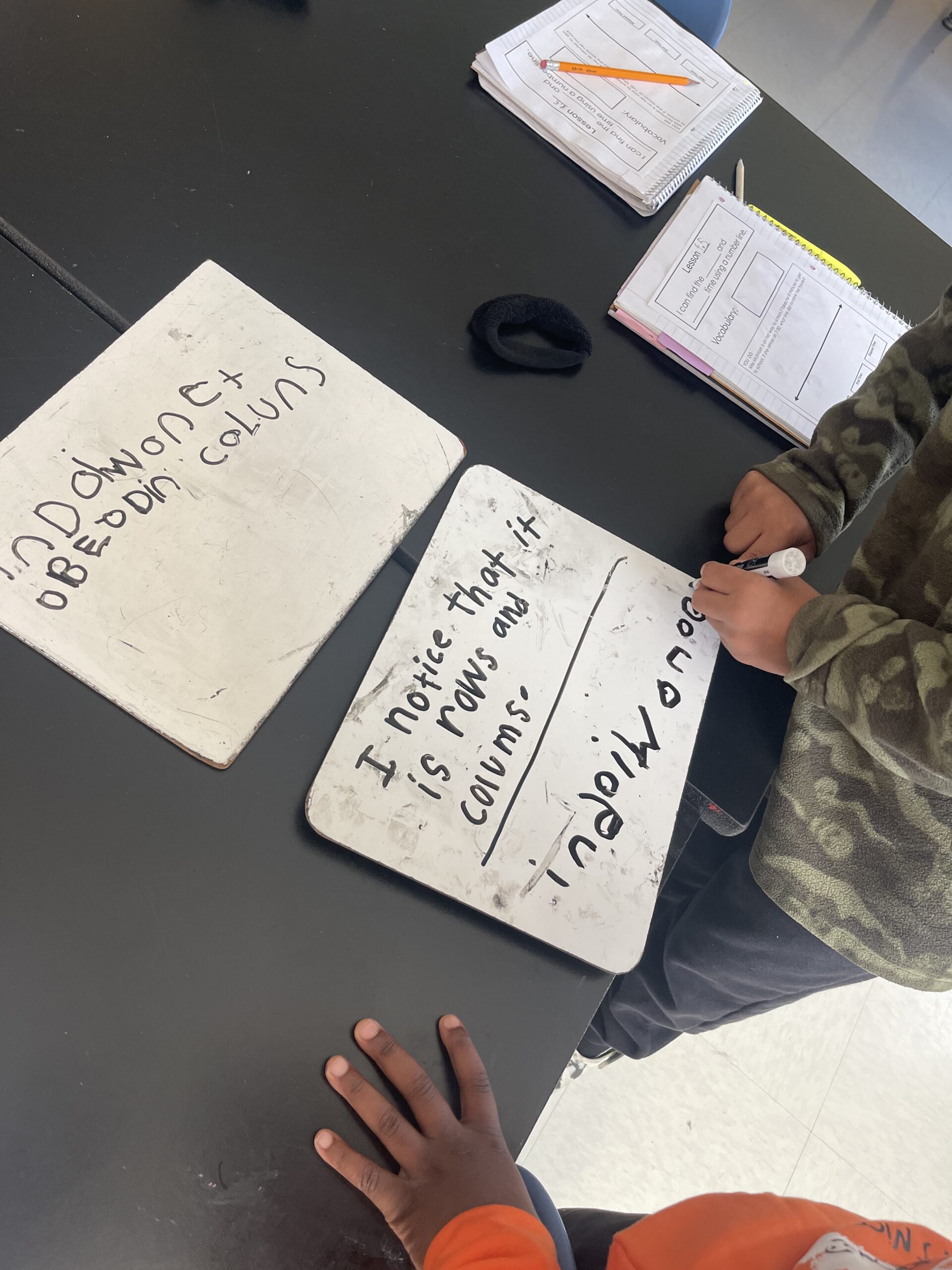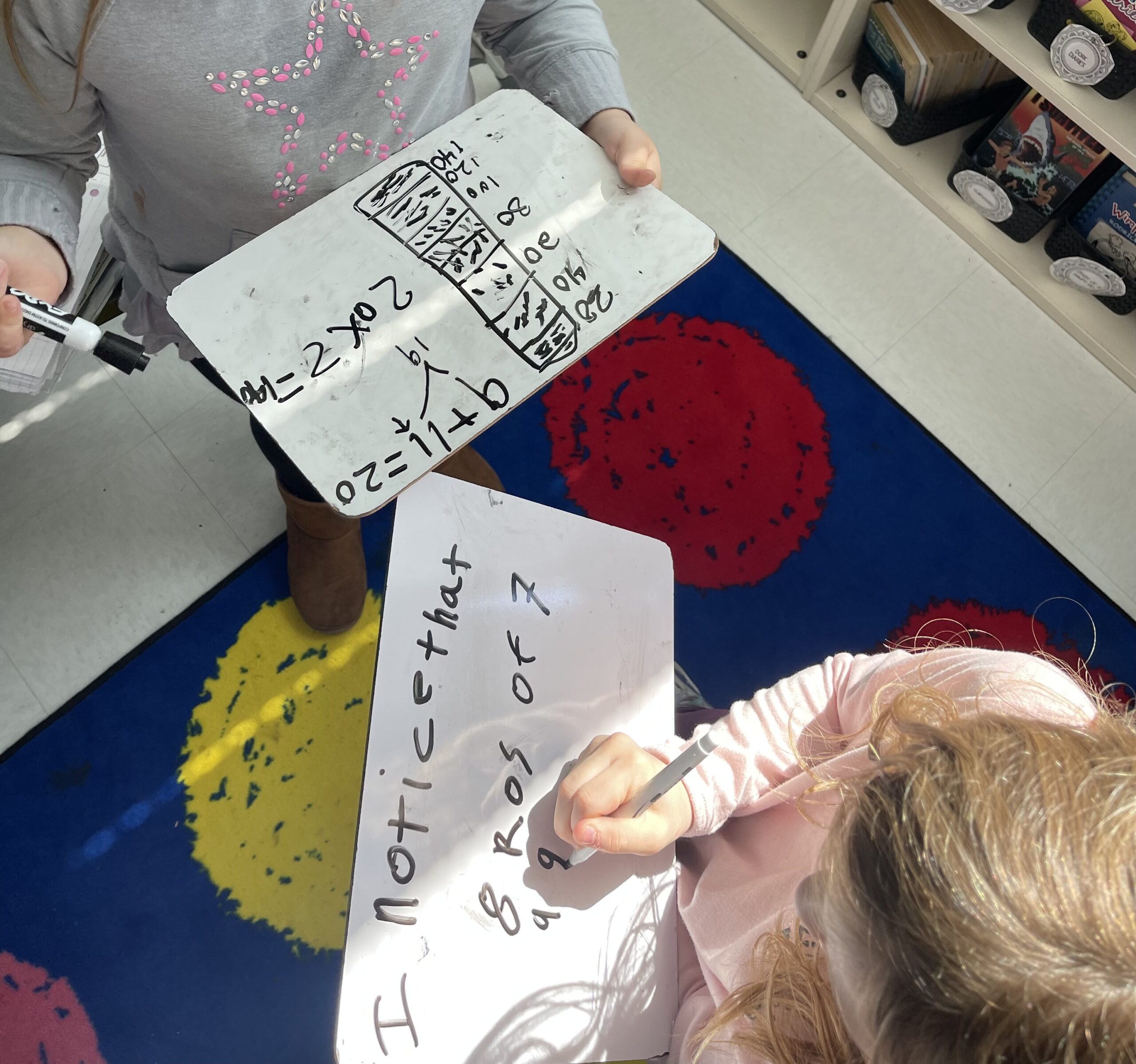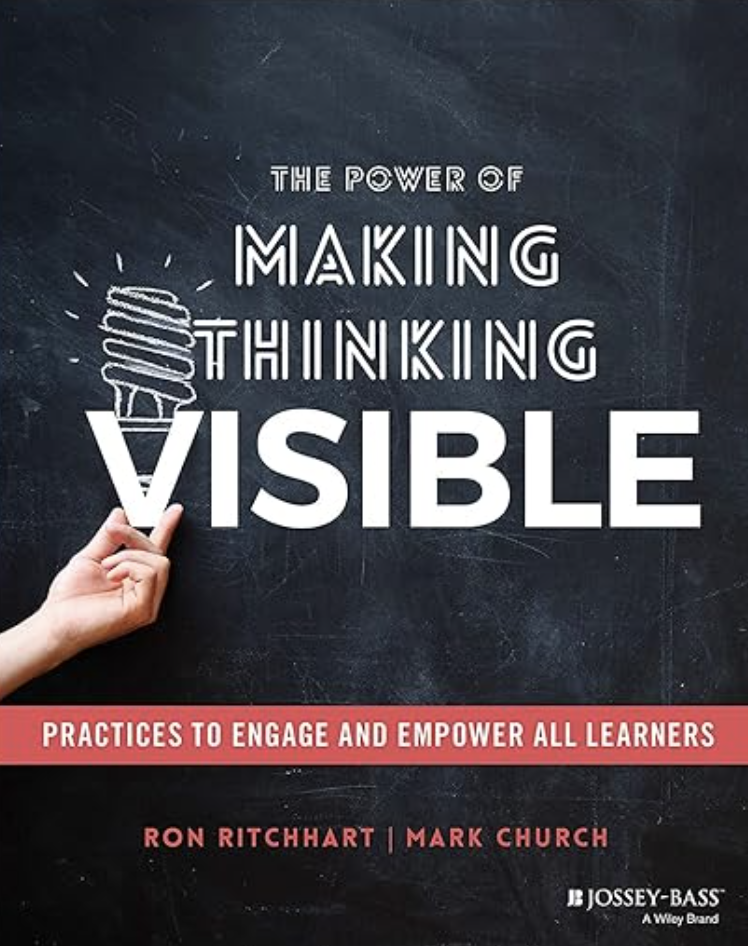Dear readers,
This week I was able to use a new MTV (Making Thinking Visible) strategy in my math classroom with 3rd graders! It pushed my boundaries as a teacher and got me out of my comfort zone of my normal routine! The students thoroughly enjoyed it and I hope you enjoy reading about a new strategy you can incorporate into your classroom! If you decide that you would like to learn more about these teaching practices, click on the image of the book for a link to purchase on Amazon! Let’s start with the fundamentals… what is MTV all about?
Gives students the opportunity to think for themselves
MTV creates a culture that celebrates individual creative ideas rather than implicitly reinforcing the groupthink phenomenon. Students are acknowledged for their individual thinking processes and share these with confidence. This is so crucial in the 21st century with the influence of social media on young minds. Teaching students how to think for themselves as a daily practice will flow into all other aspects of their lives and impact their choices as they grow up and encounter influences from their friends, family, media, and the workplace.
Creates a culture of thinking in your classroom
Students get in the habit of observing, analyzing, and questioning as part of their learning process. Using MTV strategies with fidelity, routine, and intentionally will change the way that students experience education. Having students think visibly as a part of your teaching practice will create habitual practices and rewire the way that learning occurs in students’ brains!
Challenges the role of teacher and students
Making Thinking Visible empowers students to be in control of their own learning. It moves away from the traditional model of teaching (the teacher transmits knowledge to students) and moves towards a mutual learning approach to education. You as an educator are learning just as much (if not more!) from your students as they are from you. This kind of feedback assists in figuring out how individual students process information and creates opportunities for future differentiation.
One of the authors, Ron Ritchhart, actually has a blog where he writes about his work and experiences working with teachers to help develop visible thinking strategies in their classrooms. Check out his amazing blog post about Using Thinking Routines here!
Give one, Get one

Give one, Get one is a visible thinking strategy that empowers learners to collaborate with their peers and share ideas. This strategy thrives on open-ended questions, so the one that I chose is an engaging opener that I typically do at the beginning of every math lesson: Math in Real Life- What do you notice? After students are presented with a question, they write down one idea that they have. We utilize personal whiteboards a lot in my classroom, so I asked students to write down one thing that they notice about the real-world picture using the sentence starter “I notice that…/ Yo noté que…” Many of my students are Multilingual Learners so they get to choose whether they would like to write in English or Spanish. Students then walk around the room, share their thinking orally with their peers, and discuss their responses. Students record each other ideas on their personal whiteboards until the time is up! Finally, students come back to their tables and share their (now long) list of ideas with their table mates. You can wrap up the activity by calling on a few students to share with the whole class, that’s what I did!
How did my students respond to this strategy?
My students thoroughly enjoyed this activity. It got them out of their seats and moving around the classroom! I modeled this strategy with another student. We modeled greetings, the discussion itself, and how to give feedback. I found that this activity also helped students with social skills and practicing how to greet/end conversations respectfully, which is always a plus! They did a great job with walking around the classroom and talking to other peers who do not sit at their table (this was a rule that I put in place to get them talking with others!). After peer feedback, I decided to set a four-minute timer on my Viewboard as a visual for students. This was the first time we had ever done this, so I simply asked them to have as many thoughtful conversations as they could in the allotted time and not worry too much about the number of peers they talked to. Quality over quantity, right?
What were the successes and challenges?
Students were eager to share and not shy to talk to their peers. I believe this is in part because I do random groupings every day for their vertical whiteboard word problems, so they have gotten very used to working with everyone in the class, not just who they sit next to. Most students talked to at least 2 other peers, which I count as a success in the four minutes that they had! Even my multilingual learners were walking around and sharing! Even if they couldn’t verbalize their ideas as they were still learning English, they could point to their math equations and drawings on their whiteboards. My monolingual English-speaking students were very supportive and welcoming. Next time, I will continue to use a visual timer on the Viewboard! I am happy that I changed this from my original plan of having them talk with four peers. This is intended to be a quick number talk at the beginning of the math lesson, so four minutes worked out great!
One challenge that I encountered was students having difficulty physically writing out a sentence about what they noticed initially. Many of my students are reading and writing below grade level, so this was a challenge. I was able to walk around and help some students sound out the words they wanted to write, but I couldn’t help them all in the time that I had. Next time, I will write some key vocabulary words on the board they could use in their sentences to alleviate the stress of spelling words out. I will also explicitly talk about alternatives, such as drawing pictures and math equations, which some students did without my prompting (see pictures below!) I also would love for them to write the students’ names of whom they talked to so that when we are sharing out as a whole class, they can directly reference the student’s idea: “I really liked _____’s thinking. She said that…”




How the MTV strategy fosters the TCE threshold concepts:
- Curriculum is Co-Constructed: MTV allows teachers to learn from and with their students. Although teachers in my district follow the Engage NY (Eureka Math) curriculum, they are empowered to present the material in innovative ways that work for their students. MTV has transformed the way that I view teaching as I needed to unlearn the traditional model of teaching Tier 1 instruction via lecture style. MTV is not just incorporating collaborative strategies here and there in your routine, but rather completely reinventing the way that students learn in your classroom. Students are empowered to be the ones presenting their learning to others and yourself as the classroom teacher. They are the experts in your classroom. They reflect on the concepts that you have taught and use higher-order thinking skills to deepen their understanding of the concept and present it visibly. Your classroom becomes one of mutual learning and you become the facilitator of deeper understanding!
- Education is not neutral/ Teaching is political: The purpose of public schooling in a democratic society is to empower the future generation of citizens to think for themselves, think creatively, and feel comfortable sharing their unique ideas with others. This is what MTV is all about! The public education system has a long way to go in moving away from the traditional model of teaching, but great work is being done! In fact, reading this blog post right now is one step in the right direction! Teachers have so much power to transform the way that our education system works. We must use our platform to share innovative teaching strategies with others and collaborate on creating learning spaces that empower students to think for themselves.
Thanks so much for tuning in and reading my blog post this week. I hope it inspires you to check out this awesome book and transform your teaching practices! For additional information, read this article: 32 Habits that Make Thinkers by Terrell Heick, published on the TeachThought blog!
Until next week, educators!


Hello! I love how you implemented this strategy. It was similar to the one I used (+1). I love how you included the spanish version for your ELL learners. As a fellow teacher with ELL students, I make it a point to make my classroom as inclusive as possible for all learners. I also teach math and are looking for more strategies that mesh well with my subjects. I look forward to trying this one. I think it is awesome that you gave them time to make meaningful conversation without feeling rushed to speak to a certain number of people. The culture of your classroom is evident throughout your blog. Great job!
Hi Anya!
I really loved how you set up your blog post about MTV. It was so easy to read, flowed really well, and I loved the link that you provided for readers to buy this book.
I love how interactive your lesson was – from start to finish! I love that you had them connect math with the real world and had them converse with their peers about this. I am sure that gave them many new ideas and perspectives! I like how you were able to include social skills, writing, and math all in one lesson – it seemed very well rounded. Thank you for sharing!
Carolyn, thank you so much for commenting! I really appreciate you making note of the connections across subject areas-social, writing, and math. It was truly amazing to see all three come together so seamlessly. Although I am departmentalized and only teach math and science, I always try to throw in some reading and writing into our lessons because they are just such fundamentals at an early childhood level!
Hi!
It was nice reading your posts and noticing the successes of your strategy with your students! I related to you on a point you made with your students being eager to talk with one another versus being shy. I did “Ladder of Feedback” with my students which dependent upon how you do it, can either hold great verbal communication or great written communication. I chose to incorporate both because I didn’t want my students getting so comfortable behind a screen and not realizing the value of face to face communication. However, like yours, my students were eager to share their stories and feedback. Some of them had never had the chance to be vulnerable in their work before so some hesitancy was present but the encouragement that was extended to everyone was awesome to see! Students may not always want to participate but put their lives at the center of what you teach and see how intense the engagement is!
I also liked your point on the TCE Threshold concept, “Education is not neutral/ Teaching is political”. You stated that, “The public education system has a long way to go in moving away from the traditional model of teaching, but great work is being done!” which I agree to. I credit this to the thinking behind MTV and many other innovative forms of learning because we can’t keep teach traditionally with students whose minds are so far progressed and beyond what education use to be and look like. We can’t teach the same way we used to 50/60 years ago and with that, it’s the job of the teacher to teach with relevancy to today’s generation. Students will be way more excited about learning and willing to participate when they see you trying to incorporate their interest and curiosities into the lessons. As you said, teachers hold the power to change the system as well as the lives of our youth but we have to prioritize them first to figure out what needs are and are not being met. We should encourage more creativity, multimedia, and versatility in teaching platforms/strategies so that our students feel their education is more centered around them than anything else!
Because we both admired the engagement of our classrooms with the MTV strategies we used, I found a Nearpod blog that emphasizes the importance of student engagement and how we can continue to elevate. Check it out! https://nearpod.com/blog/student-engagement/
Thanks for sharing your thoughts!
Hi Jade! Thank you for leaving such a thoughtful comment! I loved reading about your “Ladder of Feedback” blog post! I completely agree with you- my students, even very shy ones, were really excited to share just like in your classroom! I think the key to student engagement is truly that classroom community piece- they have to feel safe enough to share with their peers! I loved reading the nearpod blog you sent over! Thanks again for all of your feedback!
Hi! Great blog post about MTV! I love how you were able to share images from your lesson that really brought it to life in your post! In your successes I think it is import to make the connection that it has become a routine in your class that students work and communicate in groups and changing the groups is creating a comfortability and allowing students to communicate their struggles and learn from each other. It sounds like you have created a caring and understanding community within your classroom!
Hi Delaney! Thank you so much for your comment. I definitely try to do a lot of community building at the beginning of the year to create that caring classroom environment. It’s not always perfect and we have our moments when we have to have heart-to-hearts about being respectful to our peers and teachers, but overall I have a great group of students! This year I am stepping out of my own comfort zone and pushing collaboration- especially random grouping. I will say that when I first started random grouping daily, students were uncomfortable. After about a week or two, they get excited to work with some new peers for a little bit and get up out of their seats! Thanks again for your comment!